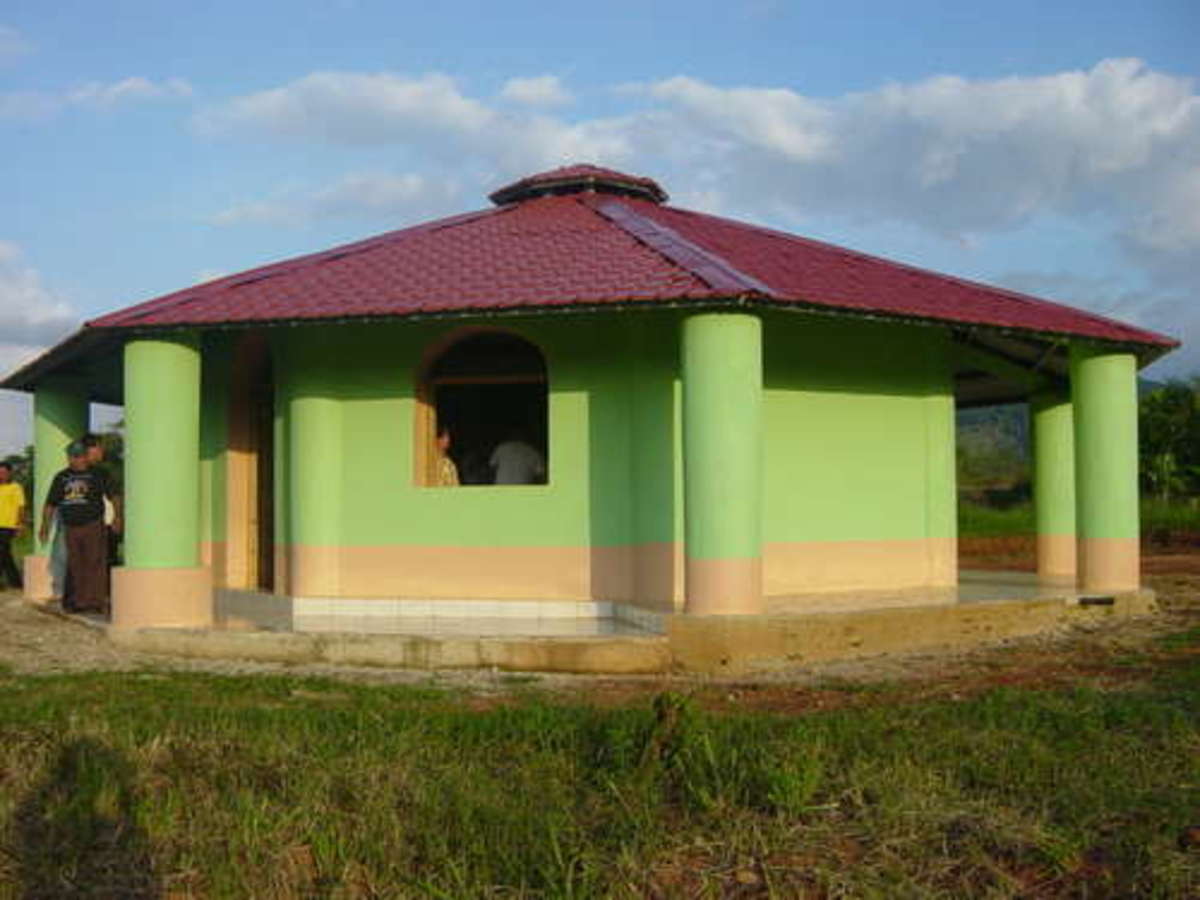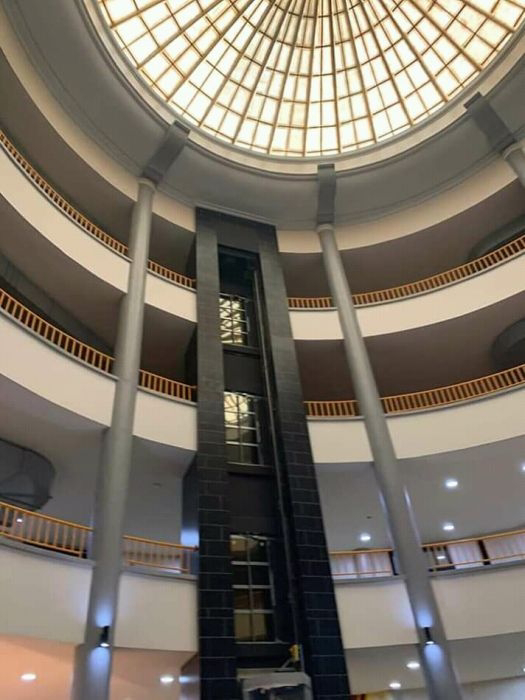Football is arguably the most popular sport in the world. This is the reason why most countries opted to invest in the construction of world class stadium. The fact that Africa lags behind in terms of sport infrastructure, only few countries in Africa with better sport facilities and infrastructure can compete with European sport infrastructures, countries like South Africa, Egypt, Nigeria, Tunisia and Angola. However, the 2010 World Cup was held in Africa because of the zeal Africans has for sport and improvement in their sport facilities which are modern technology and top notch stadium they has, The World Cup was hosted by South Africa which makes it first time in the history of Africa.
Most of these stadiums in Africa are not only designed for football only but also some are designed as a multipurpose use like Rugby, Cricket and athletics games. the below ranking also shows the cost each stadium, the capacity and some unique feature they has;
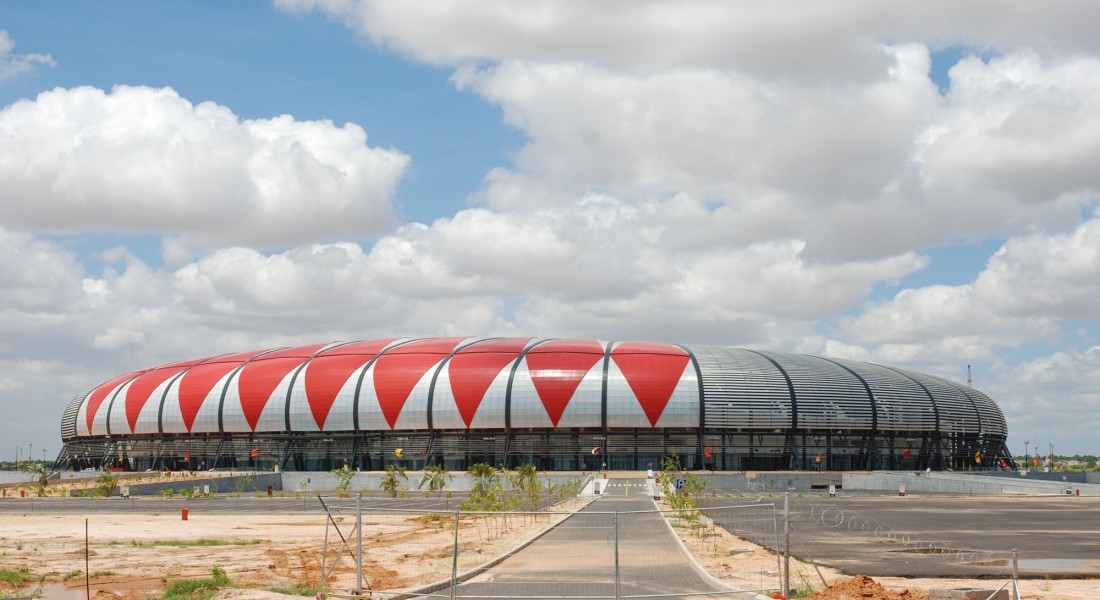
10. ESTADIO NACIONAL DE OMBAKA
Cost : $100 million
Country : Angola
Capacity : 35,000
The Estadio De Nacional De Ombaka, also called Ombaka National Stadium which is a multi use stadium in Benguela, Angola. The stadium was completed in the year 2010, which also hosted some football events of African Cup Of Nations that same year (2010). Ombaka National Stadium is mostly used for football matches than any other sport in the country. The Stadium is designed to accommodate a total of 35,000 people at a time.

The approach view of the stadium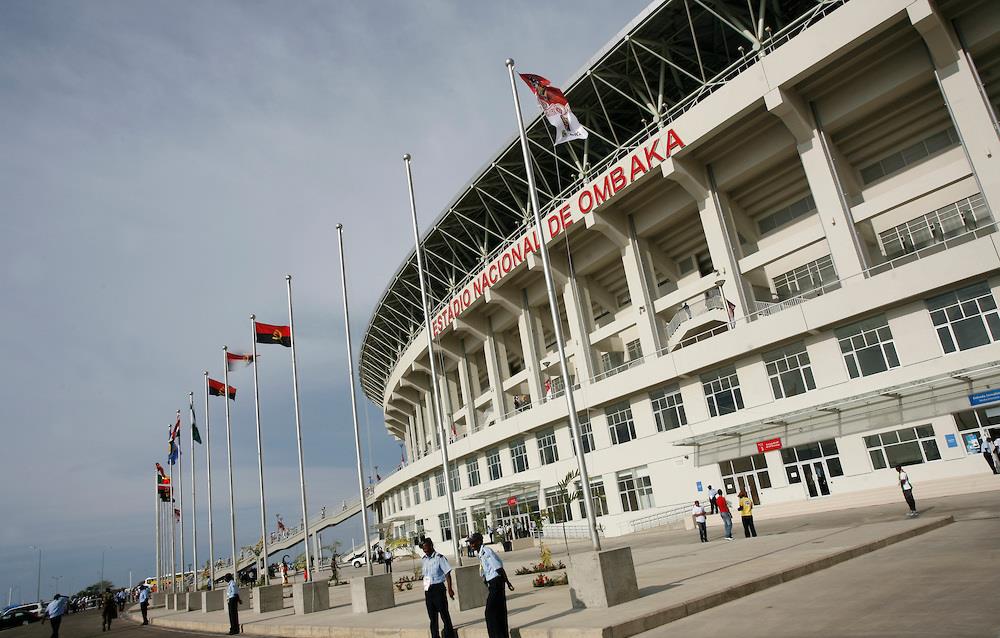
The side view of the stadium
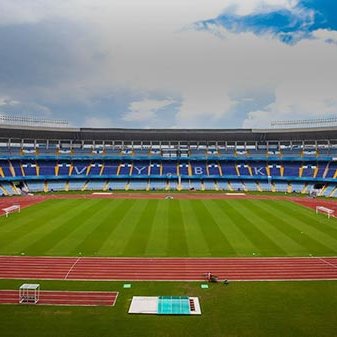
The pitch view
9. STADE OLYMPIQUE DE RADES
Cost : $110 million
Country : Tunisia
Capacity: 60,000
The Stadium is located in Rades, Tunisia. The stadium design is a masterpiece on it own which its a multipurpose. Rades Stadium is one of the best multipurpose Stadium in Africa. However, it is mostly used football matches and athletes games, This ecstatic Stadium was constructed and commissioned in 2001 as one the stadiums to be used for Mediterranean Games in 2001 and was later renovated in 2005. the Stadium has a huge capacity of about 60,000 and it is the home stadium for the Tunisia National Team.

The approach View

The overview of the Stadium

The pitch View
8. MBOMBELA STADIUM
Cost : $140 million
Country : South Africa
Capacity: 40,929
Mbombela Stadium was recently built to cater for the demand of 2010 FIFA World Cup hosted by South Africa. In many ways, it's a stadium that totally meets the required international standards, it is the centerpiece of a proposed wider sports precinct with athletics and cricket as well as other sporting codes. This 40,929-seater stadium cost a total of $140 million and is so far the smallest stadium ever constructed for World Cup.The stadium is built through taxpayer's funding.

The overview of the Stadium

Night View
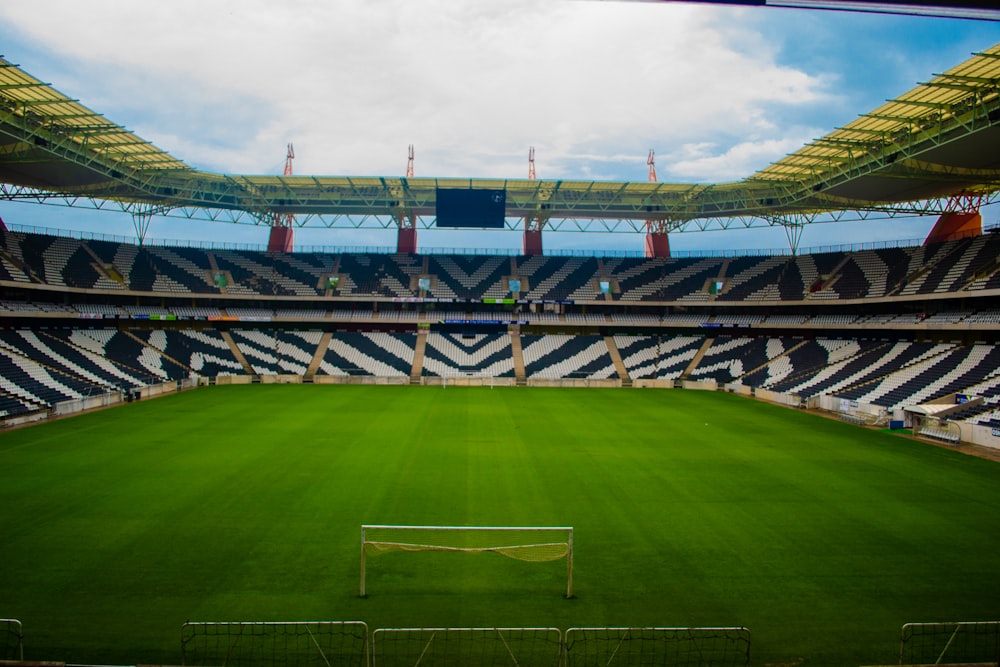
The Pitch and seat view
7. PETER MOKABA STADIUM
Cost : $150 million
Country : South Africa
Capacity: 41,733
The Peter Mokaba Stadium, is located in Polokwane, South Africa and was named after Peter Mokaba who was the former leader of Africa Congress Youth League. Mokaba Stadium is a football and a Rugby Union Stadium that has a total capacity of 41,733 and was part of the Stadium used for the World Cup. Besides, it is located few kilometers from the Old Peter Mokaba Stadium. This amazing stadium cost a total of $150 million for its construction which is usually used for intensely for training and matches.

The overview of the stadium
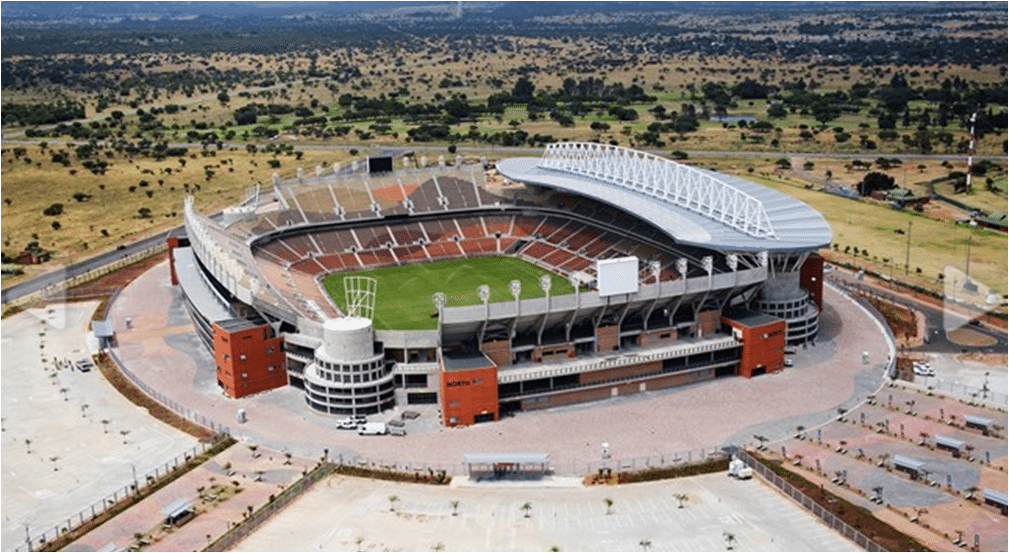
The approach view
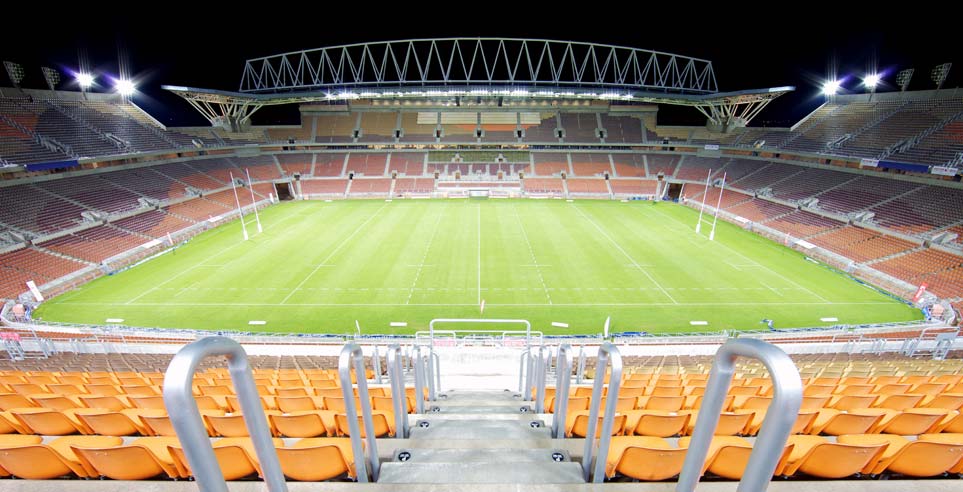
The Pitch view
6. ESTADIO 11 DE NOVEMBRO
Cost : $227 million
Country : Angola
Capacity: 48,500
The Estadio 11 De Novembro, was named after the date of Angola's independence which is marked every 11th of November, is located in Belas municipality in Luanda, Angola. It is a multi purpose Stadium that was designed by Urbinvest, Arup Sport, and Sua Kay Architects while construction was carried out by the Shanghai Urban Corporation Group. The 50,000 capacity stadium was completed in 2010 ahead of the 2010 Africa Cup of Nations which hosted nine matches during the tournament including the quarter finals and the Final match.

The approach view
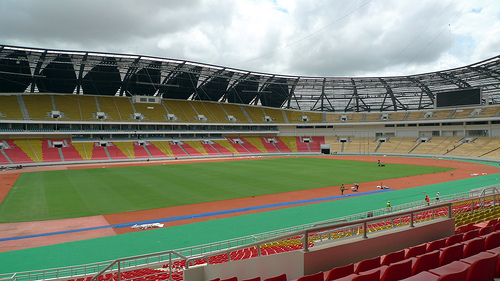
The seat and the Pitch view

The aerial View of the stadium
5.NELSON MANDELA BAY
Cost : $270 million
Country : South Africa
Capacity: 48,459
The Nelson Mandela Bay Stadium is another great Stadium in South Africa and Africa at large, which is located in Port Elizabeth, Eastern Cape, South Africa. This is a first time a World class football Stadium has been built in the Eastern Cape Province. Nelson Mandela Stadium was commissioned in 2010 in preparation for the World Cup and it is designed by a South African Company with a cost of $270 million. The masterpiece about the Stadium is the way it is positioned overlooking a lake which actually makes So unique and outstanding when viewed from the Lake. The Stadium Capacity is 48,459 and was named after Nelson Mandela Bay Metropolitan Municipality which was also named in honor of Late Nelson Mandela.
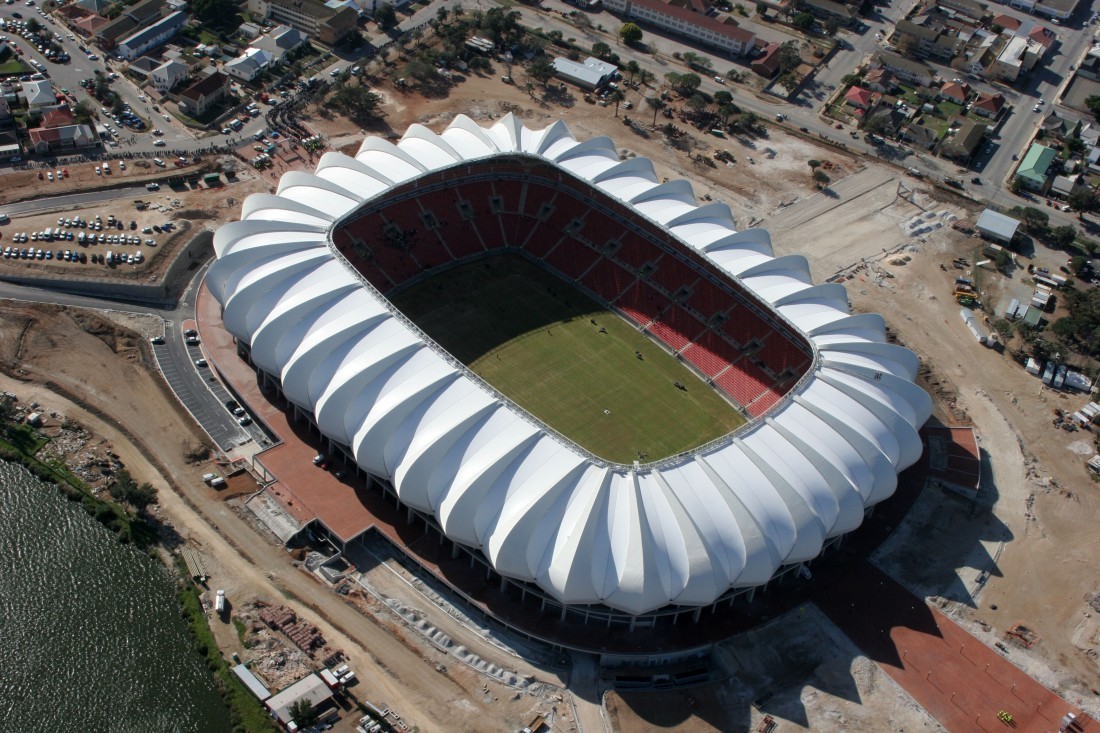
The approach view

The aerial view

The seat and Pitch View
4. ABUJA NATIONAL STADIUM
Cost : $360 million
Country : Nigeria
Capacity: 60,491
The Abuja National Stadium is located in Abuja, Federal Capital Territory of Nigeria. It is regarded as the largest Stadium in the Country, the Ultral-modern sports Complex was approved by the Federal Government on July 18, 2000 with a total cost of $360 million ahead of the 8th All Africa Games in 2003. It is among the World's 50 most Expensive Stadiums and is the home for the Nigerian National Football team.

The overview of the stadium

The seat and the Pitch View

The approach View
3. FIRST NATIONAL BANK FNB STADIUM (SOCCER CITY STADIUM)
Cost : $440 million
Country : South Africa
Capacity: 94,736
The First National Bank Stadium FNB , popularly known as Soccer City or the Calabash (Due to it's resemblance to the African pot), is located in Nasrec, South Africa. The Stadium construction Cost a totaled huge amount of $440 million and a Capacity of 94,736 which makes it the Largest Stadium in Africa. It was the Site of Nelson Mandela's first speech when he was released from the prison in 1990 and also the venue for his final public appearance in 2010 World Cup Final match between Netherlands and Spain in South Africa.
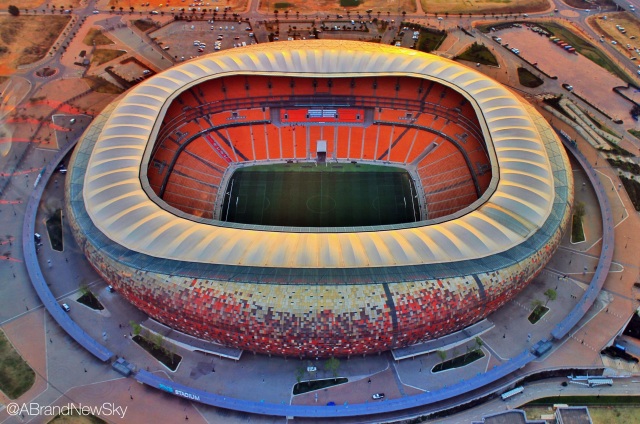
The approach view

The seat and Pitch view

The overview of the stadium
2.MOSES MABHIDA STADIUM
Cost : $450 million
Country : South Africa
Capacity: 54,000
This Ever Classic Stadium is located in Durban, South Africa with a Capacity of 54,000. The Stadium is designed for Multi Purpose use at a total cost of $450 million which was the one that hosted most of the 2010 FIFA World Cup matches. It is named after Moses Mabhida who is the former Secretary General of the South Africa Communist Party. The Stadium was opened to the public in 2009 and has a modern Sporting and a trans-modal transport facility.

The approach View

The seat and Pitch View

The aerial view
1.CAPE TOWN STADIUM
Cost : $600 million
Country : South Africa
Capacity: 55,000
This amazing Stadium is built in Cape Town, South Africa at a huge Construction Cost of $600 million which makes it the most Expensive Stadiums in South Africa and Africa at large. It is Most times referred to as "Green Point Stadium" because it was built on the same spot where Green Point Stadium was previously built. Cape Town Stadium was constructed by an indigenous company in South Africa, Murray & Roberts Construction Company and was officially opened in 2009 ahead of the 2010 FIFA World Cup.

The approach View

The Pitch view

The aerial View










